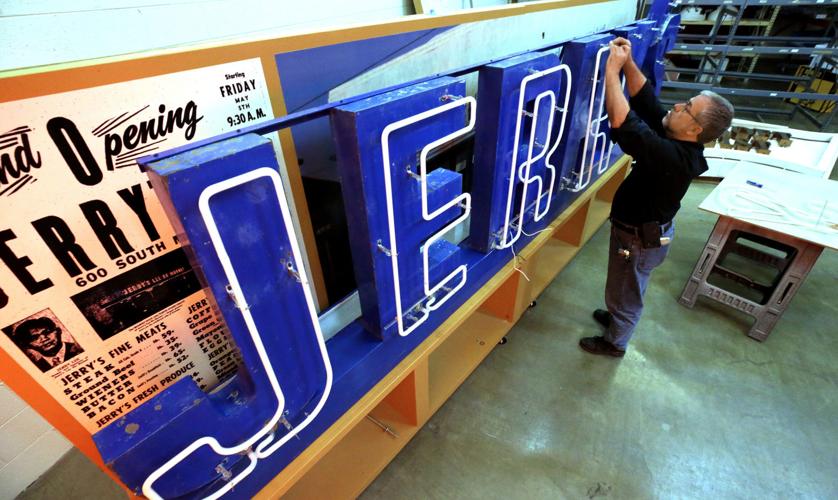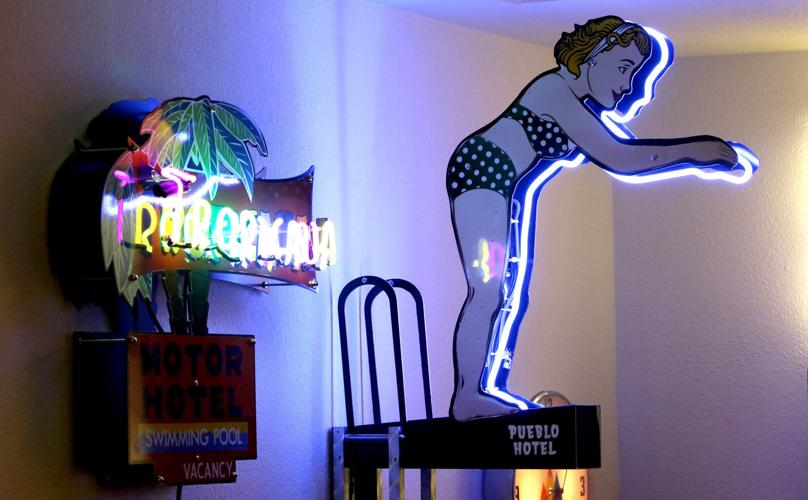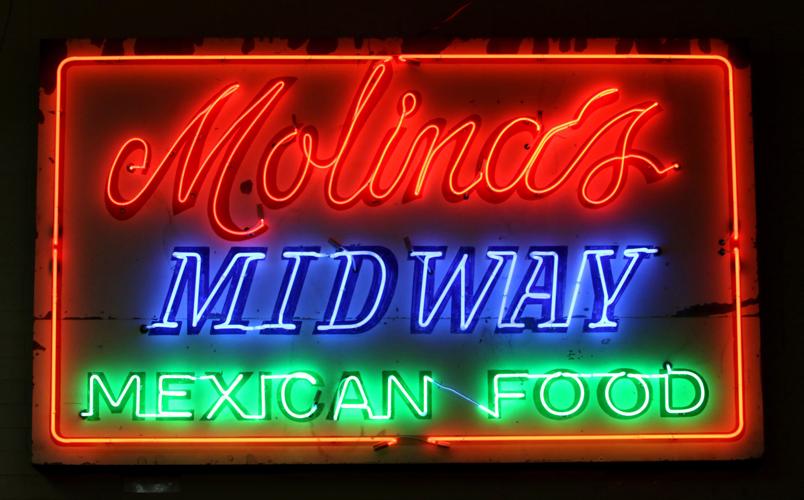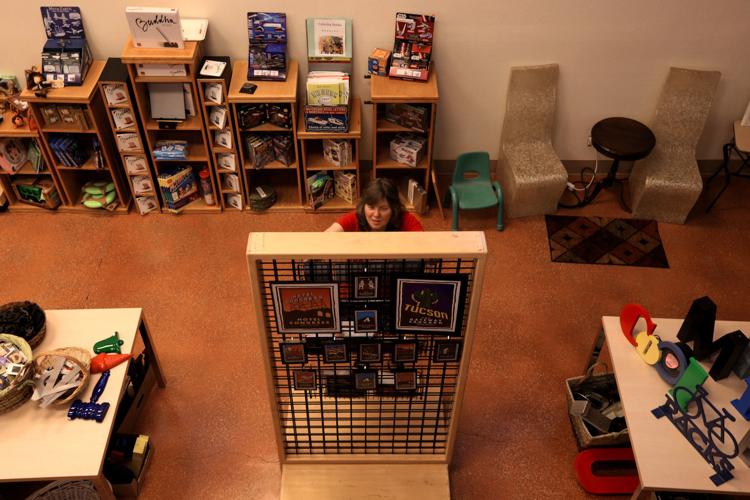They say the neon lights are bright at 331 S. Olsen Ave.
The 7,000-square-foot building was once home to Clyde Hardware but is getting new life as the Ignite Sign Art Museum, which is slated to launch during Tucson Modernism Week in October.
When open, the museum will house more than 250 signs, clocks and other advertising pieces of varying makes, shapes and sizes, that once promoted businesses and products in Tucson and across the country.
Remnants of the De Anza Drive-In movie theater, Molina’s Midway and Jerry’s Lee Ho Market are mounted on walls amid gas station and restaurant scenes set in Ignite’s cavernous warehouse space.
Miniature mock-ups of classic Tucson signs, Magic Carpet Golf and the Tropicana Motor Hotel among them, glow and hum in what was Clyde’s retail area.
A large, orange 15-cent sign that once beckoned customers to the Mr. Quick Hamburgers on South Sixth Avenue is positioned to greet visitors as they walk in the door.
Mr Quick was a McDonald’s-style chain with locations nationwide.
“On Friday night, you could get 10 burgers for $1 there,” said Jude Cook, owner of Cook & Company Signmakers, who is opening the museum with his wife, Monica Hay Cook. “The Mr. Quick on Oracle had fish and chips.”
The museum also will house Deco, a boutique that Monica opened with her sister in 2009, that sold a mix of antiques, art, jewelry and quirky Tucson-themed gifts on East Broadway, until closing its doors to relocate in May.
The Cooks plan to hold events and classes on sign-painting, neon and other topics within the museum, in addition to rotating exhibitions. They also hope to eventually offer walking and driving Tucson sign tours.
“We want to educate people and improve their understanding of the value of signs, as well as entertain,” Jude said. “Many people don’t even realize that (a sign industry) exists.”
For Jude Cook, the leap from signmaker to museum owner was organic.
Jude has been working in the sign industry since 1972.
He started his own sign company in Iowa in 1976 and launched Cook & Company Signmakers after moving to Tucson with Monica in 1983.
It wasn’t until about eight years ago, when Cook’s company was hired to move the sign that once hung in front of the Ye Olde Lantern restaurant on North Oracle Road, that he began his foray into sign preservation.
Cook transported the Lantern sign to the home of Dirk Arnold, a local artist affiliated with Tucson historical preservation efforts.
From there, Cook met other local history advocates, including Carlos Lozano and Demion Clinco, who is currently CEO of the Tucson Historic Preservation Foundation.
“My eyes were really opened when I got involved with that group of guys,” Cook said. “They made it clear that these were assets that needed to be saved.”
Cook & Company has since restored 23 neon signs around town, including the New Empire Food Market and Buffet bar signs on East Ninth Street, the KY Market sign on South Sixth Avenue, home to the creative digital agency Brink, and the original El Con Mall sign, complete with helmeted conquistador, from 1962.
For advocates like Clinco, Cook’s efforts have been invaluable.
“Jude has been instrumental in the work to preserve Tucson’s distinctive and historic neon signs,” Clinco said via e-mail. “He has become an important leader not only locally, but nationally in the recognition of mid-20th-century neon signs as an important American Industrial Art.”
The idea for a museum came to the Cooks during a visit to the American Sign Museum in Cincinnati a few years ago.
The couple had been amassing a collection of signs that they were storing at Cook & Company’s offices on South Tucson Boulevard and in their own home and backyard.
“We were reaching critical mass,” Jude said.
Jude noticed that the American Sign Museum was located in an industrial area in Cincinnati, “but it was still successful. I realized I probably didn’t need to have main street exposure to make this work. I was more comfortable with doing something like that.”
Jude said the museum will probably never reach the same scale of the American Sign Museum, which inhabits 20,000 square feet of space, with 20,000 more square feet available if needed.
But the Cooks plan to make the most out of what they have.
They are currently funding the project out of their own pockets, but are working toward nonprofit status.
Jude said he’d like to see the museum become a big draw for both Tucson residents and out-of-town visitors, gaining national recognition, like the American Sign Museum, the Museum of Neon Art in Glendale, California, and the Neon Museum Las Vegas.
“I’m hoping we become one of the things people consider doing when they come here, like the Tucson Museum of Art, the Botanical Gardens or the Desert Museum,” he said.







